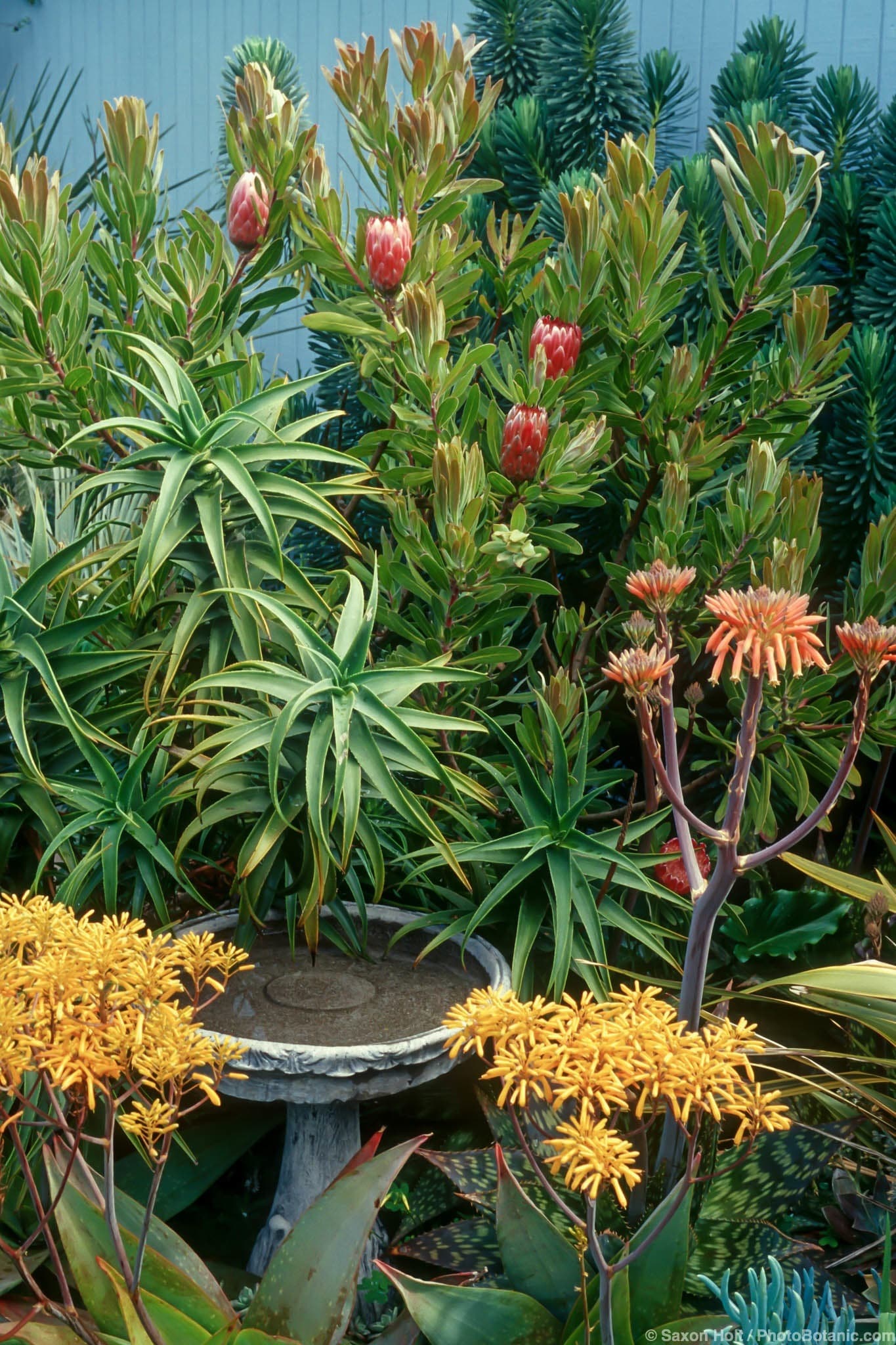Succulent garden and birdbath with Aloe buhri (yellow); Aloe saponaria (orange) ; Aloe striatula (foliage) and Protea (red).

Aloe buhri, Aloe saponaria, Aloe striatula, and Protea
Aloe saponaria, also known as orange aloe, is another succulent perennial that thrives in summer-dry climates. This plant produces vibrant orange flowers that attract pollinators to the garden. Aloe saponaria has a clumping growth habit and requires minimal water once established. This species is native to South Africa and is commonly used in landscaping for its low maintenance and drought tolerance.
Aloe striatula, or foliage aloe, is a unique succulent perennial that is prized for its striking foliage. This plant features long, slender leaves with white stripes that add interest to the garden. Aloe striatula has a shrub-like growth habit and thrives in full sun and well-draining soil. This species is native to South Africa and is a great choice for adding texture and color to drought-tolerant landscapes.
Protea, also known as red protea, is a shrub adapted to many summer-dry climate gardens. This plant produces large, showy red flowers that are popular in floral arrangements. Protea has a bushy growth habit and requires well-draining soil and minimal water once established. This species is native to South Africa and is a stunning addition to mediterranean-inspired landscapes. Consider incorporating Aloe buhri, Aloe saponaria, Aloe striatula, and Protea into your garden for a colorful and drought-tolerant display.

